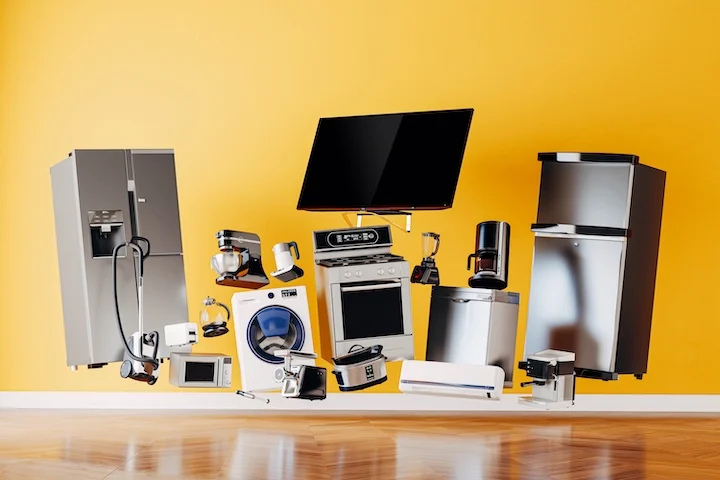You probably interacted with nanomagnetic technology a dozen times today without realizing it. These microscopic magnetic particles are hiding in plain sight, working behind the scenes to make your daily life smoother, safer, and more convenient.
Most people think magnets are just those things you stick on your fridge. But the real magic happens at the nanoscale, where magnetic particles so small you’d need a microscope to see them are doing some seriously impressive work. Let’s look at five everyday objects that depend on nanomagnetics to function.
Your Credit and Debit Cards
That black or brown strip on the back of your credit card? It’s not just a decorative stripe. It’s packed with millions of tiny magnetic particles suspended in resin. Each particle is just a few micrometers across, small enough to be considered part of nanomagnetic technology.
When you swipe your card, the machine reads the magnetic pattern encoded on that strip. The pattern represents your account number, expiration date, and other crucial information. The particles are arranged in specific orientations to create a unique magnetic signature that card readers can decode.
Modern payment cards are moving toward EMV chips and contactless payment, but magnetic strips are still everywhere because they’re cheap, reliable, and hard to accidentally erase. The magnetic material used needs to be stable enough that it doesn’t lose information over years of sitting in your wallet, but also easy enough to write to during card production.
The same principles that make these particles work in cards apply to countless other storage technologies, from hotel key cards to transit passes.
Hard Drives in Computers and Game Consoles
This one might not surprise you since we think of hard drives as magnetic storage devices. But what’s wild is just how small the magnetic bits have gotten. Modern hard drives pack over a trillion bits of data per square inch. Each bit is a magnetic region just tens of nanometers across.
Your laptop’s hard drive contains spinning platters coated with a thin film of magnetic nanoparticles. A tiny arm with a read/write head flies just three nanometers above the surface, closer than a virus is wide, reading and writing data at incredible speeds. One small bump or vibration could cause the head to crash into the platter and destroy everything, but precision engineering keeps that from happening.
Gaming consoles like PlayStation and Xbox still use hard drives for mass storage because they offer the best balance of capacity, cost, and performance. Yes, SSDs are faster, but when you need to store 100+ gigabyte games, magnetic storage is still king.
Medical researchers are using similar magnetic nanoparticles to revolutionize drug delivery and cancer treatment, proving that technology developed for one purpose often finds unexpected applications.
Even as cloud storage becomes more popular, the data centers storing all those files rely heavily on magnetic hard drives. Every photo you’ve ever uploaded, every video you’ve streamed, and every document you’ve saved to the cloud lives on magnetic storage somewhere.
Speakers and Headphones
Every time you listen to music, watch a video, or take a phone call, you’re relying on nanomagnetic technology. Speakers and headphones work by converting electrical signals into sound waves, and magnets make that conversion possible.
Inside every speaker is a permanent magnet and an electromagnet. The permanent magnet creates a steady magnetic field. The electromagnet, which is just a coil of wire attached to a speaker cone, creates a variable magnetic field based on the audio signal. These two magnetic fields interact, pushing and pulling the speaker cone back and forth to create sound waves.
The quality of the magnets directly affects sound quality. High-end headphones use neodymium magnets, which are made from neodymium, iron, and boron. These magnets are incredibly strong for their size, which allows for more precise control of the speaker cone and clearer sound reproduction.
Modern speaker design increasingly uses magnetic nanoparticles in specialized coatings and components to reduce distortion and improve frequency response. The difference between cheap earbuds and premium headphones often comes down to the quality and precision of the magnetic components inside.
Your Car Is Full of Magnetic Sensors
Modern cars have dozens of sensors monitoring everything from wheel speed to crankshaft position. Many of these sensors rely on magnetic technology, often using nanostructured magnetic materials to achieve the sensitivity and reliability required for automotive applications.
Anti-lock braking systems use magnetic sensors to monitor the speed of each wheel hundreds of times per second. If one wheel starts to lock up during braking, the system detects it immediately and reduces brake pressure to that wheel, preventing skids. This happens so fast that you barely notice, but it can be the difference between stopping safely and sliding into an accident.
Your car’s speedometer probably uses a magnetic sensor too. A magnet attached to the transmission or wheel creates a changing magnetic field as it spins. The sensor detects these changes and converts them into a speed reading on your dashboard.
Engine management systems rely on magnetic sensors to track the position of the crankshaft and camshaft. This information tells the engine computer exactly when to fire each spark plug and inject fuel. Without accurate magnetic sensors, your engine would run rough or not start at all.
Even features you might not think about, like automatic headlights, power windows that stop if they detect an obstruction, and parking sensors, often use magnetic technology. The tiny magnetic particles in these sensors need to be incredibly stable and reliable since sensor failure in a car can have serious safety implications.
Smartphones Contain Multiple Magnetic Technologies
Your smartphone is basically a collection of miniaturized magnetic technologies all working together. Start with the compass app. That relies on a magnetometer, a sensor that detects the Earth’s magnetic field using tiny magnetic elements that respond to external fields.
The speakers that play your ringtones and the microphone that picks up your voice both use magnetic technology, just like the headphones we discussed earlier. But smartphones also use magnets in less obvious places.
Many phones use magnetic sensors to detect when you flip a cover closed, automatically turning off the screen to save battery. The vibration motor that buzzes when you get a notification uses a small magnet and electromagnet to create rapid movement.
Wireless charging, which is becoming standard on flagship phones, uses electromagnetic induction. A coil in the charging pad creates a changing magnetic field. A coil in your phone converts that magnetic field back into electricity. No physical connection needed, just magnetism transferring energy through space.
Some phones even use magnetic nanoparticles in their cameras. Optical image stabilization systems use magnets to move the camera lens or sensor slightly to compensate for hand shake, resulting in sharper photos and smoother videos.
Creating content about these everyday technologies helps people appreciate the science behind objects they use constantly but rarely think about.
Magnetic Ink in Your Money
Look closely at a dollar bill or any paper currency. Some of those markings are printed with magnetic ink containing iron oxide nanoparticles. Vending machines, bill validators, and ATMs use magnetic sensors to detect this ink as one way to verify that bills are genuine.
Counterfeiters can copy the visual appearance of money pretty well with modern printers, but reproducing the exact magnetic properties is much harder. The magnetic signature acts as a hidden security feature that machines can check instantly.
Different denominations have different amounts and patterns of magnetic ink, which is how a vending machine knows if you inserted a one, five, or twenty dollar bill. The machine passes the bill through a magnetic field and measures how the ink responds.
This technology has been around for decades, but it’s constantly being refined. Modern currency uses increasingly sophisticated magnetic materials and patterns to stay ahead of counterfeiters. The magnetic particles need to be small enough to print clearly but large enough to create a strong, detectable signal.
Why This Matters
These five examples barely scratch the surface. Magnetic nanoparticles are in electric toothbrushes, refrigerator door seals, laptop hard drives, MRI machines, industrial motors, wind turbines, and hundreds of other products.
The reason nanomagnetics shows up everywhere is simple: as you shrink magnetic materials down to the nanoscale, they gain properties that make them perfect for modern technology. They can store more information in less space. They respond faster to changing magnetic fields. They can be manufactured precisely and consistently.
Understanding that these invisible forces are at work all around you changes how you see everyday objects. That smartphone in your pocket, that car in your driveway, even that credit card in your wallet represent decades of materials science research and engineering innovation.
The next time you swipe a card, listen to music, or check your speed while driving, remember: you’re experiencing the practical magic of nanomagnetics. These microscopic particles are proof that some of the most powerful technologies are also the smallest and most invisible.



